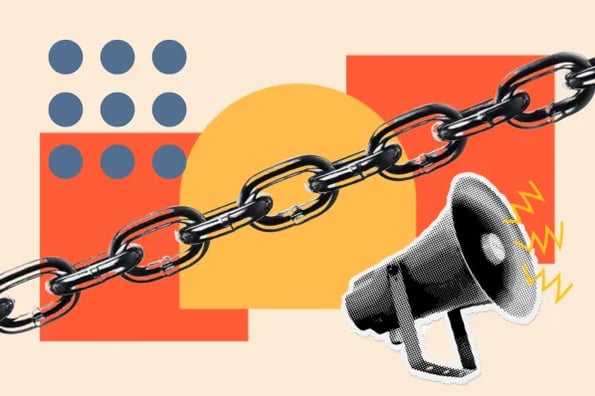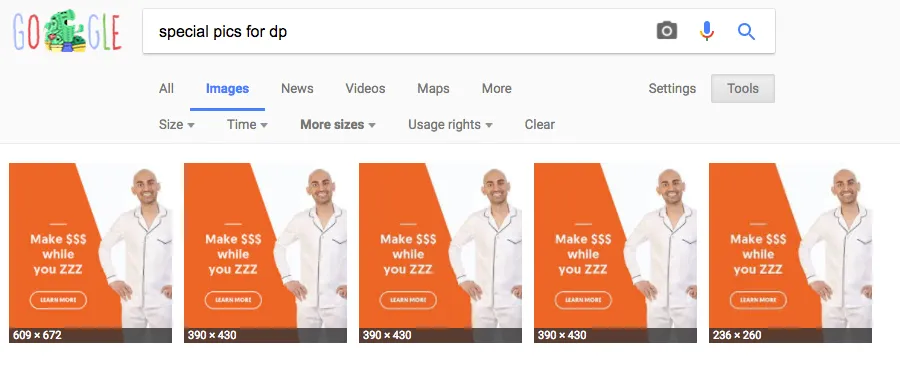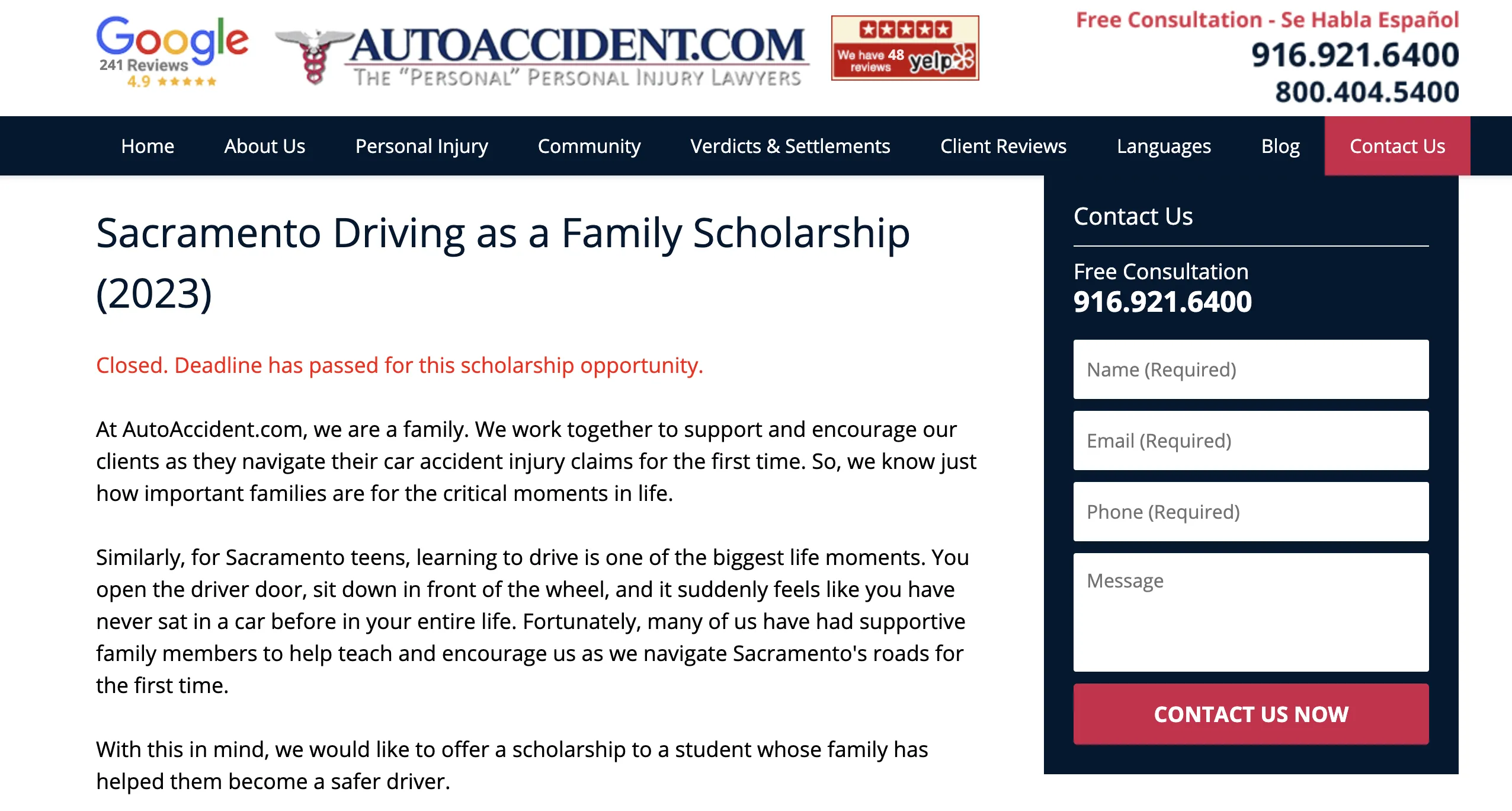20 Types of Backlinks in SEO — The Complete Guide
Backlinks continue to be an important ranking factor in 2023 — and it seems it never changes. But what kind of backlinks matter most in SEO?

Backlinks continue to be an important ranking factor in 2023 — and it seems it never changes. But what kind of backlinks matter most in SEO? Editorial links, pillar links, sitewide links? What’s the difference between them? Which are worth the effort? In this guide, I’ll share 20 different types of backlinks in SEO with examples. Additionally, you’ll read some expert tips and tricks to acquire high-quality links and gain better search visibility. Table of Contents An SEO backlink is a hyperlink from one website to another. They’re also known as inbound, incoming, or external links. Backlinks are an integral part of search engine ranking algorithms, as Google uses them to determine the credibility, authority, and relevance of the website. The more backlinks from authoritative sources, the better the chances of higher rankings. Here’s how a backlink looks on a web page. Over 46% of SEO pros spend $5,000-$10,000 monthly on link building, a recent study found. However, according to Ahrefs, a whopping 66.31% of pages have no backlinks. And 90.63% of pages receive no organic search traffic from Google. See the trend? But let’s dive deep and see why backlinks matter. Backlinks are known as the “vote of confidence” from Google. If your website gets high-quality backlinks, Google sees you as a trustworthy source, thus elevating your ratings in the search results. Ahrefs backs up this assumption with a study revealing the direct correlation between the number of referring domains and keyword rankings. Does it mean SEOs have to focus on acquiring an abundance of backlinks? Quite the opposite. A plethora of low-quality backlinks won’t do in the long run, as Google may consider them spammy. That said, I suggest acquiring high-quality backlinks in fewer quantities rather than playing the numbers game. But what defines a quality backlink? A high-quality backlink comes from a high domain authority website that is trusted by not only search engines but also people. Here is a case study from Andrew Holland, Director of SEO at JBH. Look how they managed to improve their rankings with the help of a few links. Acquiring backlinks from relevant and reputable websites gradually improves domain authority (DA). This metric, developed by Moz, scores websites from 1 to 100. Higher scores indicate that your website will rank higher on SERPs. However, SEO folks rely heavily on Ahrefs’ Domain Rating — an altered alternative to Moz’s score. Check your website’s domain rating with this free tool. Pro tip: Earn backlinks from quality sites with a DR of 40+. Target DR 70+ sites for maximum impact on your rankings. Backlinks are not only about improving your website. In fact, they can bring you referral traffic and prospective customers. This occurs when someone clicks on links in an article and lands on the webpage of the linked website. Note: In my experience, you never know what media outlet or blog post will convert better and how many leads will come to your website. I’ve seen my guest posts bring hundreds of demo requests while others resulted in a few clicks. So, don’t build links for the sake of referral traffic alone. Consider it a nice side effect. Learn the nuances of the 20 most fruitful backlink types with examples and how to earn them. Editorial backlinks are organic links acquired when other websites find your content valuable and link to it. These are the most coveted in SEO as they are earned based on superior, relevant content rather than being paid or requested. Therefore, editorial backlinks significantly improve SEO performance by signaling to search engines that your content is authoritative and credible. Usually, these links come from highly authoritative websites with a DR of 80+. Such websites include HubSpot, TechCrunch, Forbes, Vogue, news sites, etc. To earn editorial backlinks, focus on creating authentic content with “originality nuggets.” Examples include thought leadership content, research, case studies, linkable assets, expert round-ups, and experiments. A simple way to gain editorial links is to use services that connect journalists with experts like HARO and HaB2BW. Pitch your unique point of view backed up by data to get mentioned in industry publications. These platforms email a source and a journalist with questions and answers every day. HubSpot recommends: Find out which types of HubSpot’s blog post earn the most editorial backlinks. Guest post backlinks are a type of backlink that you acquire by writing and publishing content on other websites, typically within your niche or industry. Guest posts help improve your website‘s authority and relevance within your industry, offering both SEO value and driving targeted traffic at the same time. Choose reputable websites for guest posting, and ensure your content is well-researched and provides value to the host site’s audience. Pitch your guest post directly to a media outlet’s content marketer, or look for the guest post submission form like we have at HubSpot. The strategy involves identifying broken links on relevant websites and suggesting your content as a replacement. This way, you’re earning a backlink by providing a solution to the webmaster. Use tools such as Check My Links or Broken Link Checker to scan relevant websites, find broken links, and then reach out to the site owner with your content as a solution. Brian Dean capitalizes a lot on this strategy to earn top-notch backlinks with one piece of content. Explore how Brian pitches webmasters. Pro tip: Create astonishing content pieces to make webmasters link to them. As with editorial backlinks, content with originality nuggets shows the best results. Dofollow backlinks allow search engines to follow them, passing on link equity to the linked page. By default, all links are dofollow and do not require a rel= “dofollow” attribute to be used. Example: <a href=“https://blog.hubspot.com/marketing/covid-19-benchmark-data” target=“_blank” rel=“noopener”>How COVID-19 Is Impacting Sales and Marketing Performance</a> When high-quality websites link to your content using “Dofollow” links, it enhances your website's credibility and improves its position in search engine results. Your domain and page rating also rise. Nofollow links contain the nofollow (rel=“nofollow”) attribute and instruct search engines not to follow them (not to pass link equity to the page). Although they don't directly impact authority, nofollow backlinks can still drive traffic to your site and contribute to a natural link profile. Example: <a rel=“noopener” target=“_blank” href=“http://www.blog.hubspot.com/” rel=“nofollow”> Head to the HubSpot Blog </a> You might want to use “Nofollow” links when you link to a page you don’t want to endorse, the link is sponsored or is user-generated. Comment backlinks are links that you acquire by leaving comments under blog posts. Likewise, forum backlinks come from forum threads or your signature. While they are considered one of the easiest ways to acquire backlinks, they are often associated with low authority and relevance. Search engines are aware of comment spam and, in many cases, treat comment backlinks with caution. The only reason I mention them is to warn you about the negative impact these links may cause. Pro tip: Here are four well-known forums you can leverage for backlink building: Niche edits, also known as curated links or link insertion, are backlinks inserted into existing articles, listicles, or pages on a website, rather than creating new content as you would with guest posts. The top benefit of niche edits is that you add contextual links to already indexed and high-ranking pages. This means you start getting link juice nearly immediately. Conversely, when you build links from new content (guest posts, press releases, etc.) you have to wait for the page to be indexed, which takes anywhere from two weeks to months. “At HubSpot, we’re really trying to take content that’s already out there, improve upon it, and make sure that it’s optimal to support driving referral traffic and signups,” says Autumn Witter, an associate account manager of SEO and link building at HubSpot. To do so, Witter’s team finds content where HubSpot products are already being mentioned. They then ask webmasters to add more relevant links with more relevant anchors. These links you obtain by distributing press releases about your business updates or events. If done right, it’s a great tactic to gain brand exposure, as well as give an additional boost to your SEO efforts. Use them when you want to inform people about a big event that your company is organizing, announce the release of a new product or service, or simply when you want to get attention for your brand. Choose any natural-looking anchor text. Naked URLs, branded or generic anchors, and CTAs work best. Keep in mind that most press release links are usually “Nofollow.” Learn how to carry out an effective press release link building. Social media backlinks refer to any link from a social media website or page to your site. They can be placed inside a post, in the comments, on user profiles, or be shared directly on the feeds. While social media links are “Nofollow,” they can indirectly improve SEO by driving traffic and engagement on your site. The latter translates into higher rankings, as it boosts “time on page” and improves user behavior. Both are ranking factors. Share nice visuals, videos, and thought-provoking posts across your social media channels, and include a link to your web page. Andy Crestodina virtuously invites its LinkedIn audience to navigate to his company’s blog posts by crafting enticing hooks, sharing diagrams, or video explainers. Directory backlinks come from submitting your website to online directories or business listings, typically with a link to your site. They can enhance local SEO and diversify your backlink profile. Don’t submit your site to hundreds of directories. Focus on reputable, niche-specific directories that are relevant to your business with an active audience. Further, ensure your information is consistent across listings, as Google pays attention to this for local businesses. Some of the decent directories include: An image backlink is an image that is linked (attributed) to a site/page. Why care about image backlinks? A Semrush study discovered that webpages using images earn 555% more quality backlinks. Here are the most common types of images that tend to gain backlinks passively: Use Google Reverse Image Search to identify where exactly your image is being used. If someone is using your image and is not crediting you, directly reach out to the webmasters and claim your backlink. Pro tip: Create original, high-quality images and use descriptive file names and alt tags to enhance their discoverability. The links come from video descriptions, comments, or video credits when your videos are uploaded on platforms like YouTube. Every link from YouTube content is “Nofollow.” While backlinks on YouTube don't give you direct SEO link juice, they are still links that can be discovered within YouTube searches and generate traffic. Optimize video titles, descriptions, and tags for relevant keywords to maximize their SEO impact. Paid link building is when a website pays a third-party domain for a dofollow backlink that points back to its domain. According to Authority Hackers, 74.3% of link builders pay for links, with the average amount being $83 for each link. The numbers are impressive, but keep in mind that buying links is a black-hat SEO tactic. Google sees them as link schemes and a violation of search engines’ policies. If engaging in sponsored link building, ensure the links are relevant to your niche and come from real websites, not PBNs. Ideally, they come from a commercial blog (some editors may sell links). Domains with the EDU and GOV suffix are the most trusted extensions for Google, as these areas belong to government and educational institutions. These backlinks possess more authority and are harder to get than regular backlinks, but they are worth the effort. What makes this type of backlinks unique is that you can’t buy them. How to acquire? For educational institutions, try creating scholarships, internships for students, and events to grab their attention. For example, AutoAccident regularly creates college scholarships. When it comes to .gov websites, they are super selective. Most often, you have to contact them to partner up on different initiatives. If a website talks about your brand, a case study, or research but does not link to you, these are unlinked brand mentions. Therefore, they’re great opportunities for link-building. Use Ahrefs to spot unlinked brand mentions: Obtain backlinks by being a guest on a podcast or when your website is mentioned in podcast show notes. It’s a great way to build homepage links, enhance your online presence, and contribute to industry recognition. Identify relevant websites and podcasts and reach out with personalized messages. Here are some popular podcast platforms: Earn links by providing testimonials or reviews for products, services, or businesses. They are a win-win situation both for the business and the reviewer. For businesses, it's a valuable form of social proof that adds to their credibility and reputation. On the other hand, the reviewer will get a link-building opportunity. All you have to do is select products and services that you actually use, pitch them, and then create a testimonial. Footer links are sitewide links placed at the bottom of your website in the footer section. They appear on every page since the footer is static. Use your footer to place internal links to important pages on your website so visitors can easily find information. Google frequently checks footer links to make sure that you prioritize the user by providing value rather than for SEO purposes. Though most of the time, footer links are internal, there are a few times when you might need to link to external sources, like credit a company that designed your site. Badge backlinks are a unique type of backlink that can be earned when other websites or organizations award you with a digital badge or emblem that links back to your website. These badges are typically given to recognize achievements, certifications, partnerships, or contributions. Influencers have high authority, they are respected in their industries, and their recommendations are strong. When they mention or link to your website in their content, Google views these backlinks as a vote of confidence, especially in the era of the E-E-A-T algorithm. Collaborate with influencers in your niche for round-ups, joint studies, etc. Ask for a product review or recommendation, and run a creative contest on their social media channels or website linking back to you. Still not sure how to acquire backlinks? This section covers 5 tips for backlinks shared by industry experts. "A perfect backlink is an elusive goal. While you may strive to acquire backlinks that meet many metrics, your competitors are securing backlinks that intuitively fit their content, giving them an edge,” says Georgi Mamajanyan, CEO at SayNine. As a result, Mamajanyan recommends focusing on quality over quantity. He also recommends identifying “the minimum metrics that meet your standards.” From there, you can build backlinks accordingly. “The most critical metric isn‘t DR or DA, nor is it domain traffic; it’s whether the website represents a legitimate business (e.g., SAAS/Agency) or if it's merely a platform created solely for selling backlinks," says Mamajanyan. Unlinked brand mentions are low-hanging fruits for both early startups that are just taking off and creating buzz and established companies. Monitor sites that don’t give you credit once per 30 days to strike while the iron is hot. Securing these links usually comes with a low effort since media outlets already know and recommend your business. According to Digital Olympus Founder Alex Tachalova, “The future of link building lies in acquiring links strictly through relationships.” For example, Tachalova says, your team should ask industry players to share their thoughts on the topics you cover. This applies to webinars, podcasts, and virtually any marketing initiative that allows you to feature other companies. “ Links are recommendations that can only be earned by connecting your brand meaningfully with other companies and individuals who may provide backlinks to your site. To achieve that, run co-marketing campaigns with other companies in your niche,” Tachalova says. According to Tachalova building relationships with niche professionals unlocks various opportunities. “Instead of focusing solely on transactions, consider the value you can offer other companies. This not only helps you gain links but also expands your brand's visibility and puts your product or service in front of their audiences,” he says If your services are limited to a city or a target audience, build links from indirectly related platforms. Say, you have an online shop for vegan skincare cosmetics. Which are your target sites for backlinks? Top of mind, blogs about skincare and vegan products. However, you can also consider building links from environmental projects. For example, write op-eds on how your company contributes to resolving social or environmental disasters. You can then highlight the cruelty-free, low waste you’re on. When you grow, some competitors may take extra measures to make sure you fail in rankings by attacking your site with negative SEO. Usually, your site is subjected to link spam from PBNs, link farms, etc. To maintain a healthy backlink profile, conduct a link-building audit once per month. Also, set up notifications about low-quality links pointing to your website using Linkody — a backlink monitoring tool. Noticed unnatural links in a big quantity? Google recommends disavowing all of them to prevent a negative impact on your site’s rankings. Watch Matt Cuts from Google addressing questions about negative SEO in 2023. SEO is complex. It's essential to not only acquire backlinks but also to understand the nuances of each type. Make sure to combine different link-building types with other SEO initiatives to maximize your online visibility.
What is an SEO backlink?
3 Undeniable Benefits of SEO Backlinks
1. Better Search Rankings
2. Higher Domain Authority
3. Referral Traffic and Leads
20 Types of SEO Backlinks
1. Editorial Backlinks
2. Guest Post Backlinks
3. Mend Broken Backlinks
4. Dofollow Backlinks
5. Nofollow Backlinks
6. Comment and Forum Backlinks
7. Niche Edits Backlinks
8. Press Release Backlinks
9. Social Media Backlinks
10. Directory Backlinks
11. Image Backlinks

12. Video Backlinks
13. Paid Backlinks
14. Edu and Gov Backlinks

15. Unlinked Brand Mentions
16. Podcast Backlinks
17. Testimonial Backlinks

18. Footer links
19. Badge Backlinks
20. Influencer-Generated Backlinks
5 Tips for SEO Backlinks
Tip 1: Focus on quality over quantity.
Tip 2: Prioritize low-hanging fruits for quick wins.
Tip 3: Leverage relationships, not links.
Tip 4: Widen your prospecting to indirectly related verticals.
Tip 5: Monitor and disavow low-quality links.
Leverage Different Types of Backlinks to Maximize SEO Efforts

 FrankLin
FrankLin ![SEO Starter Pack [Free Kit]](https://no-cache.hubspot.com/cta/default/53/1d7211ac-7b1b-4405-b940-54b8acedb26e.png)












_17.jpg)




















